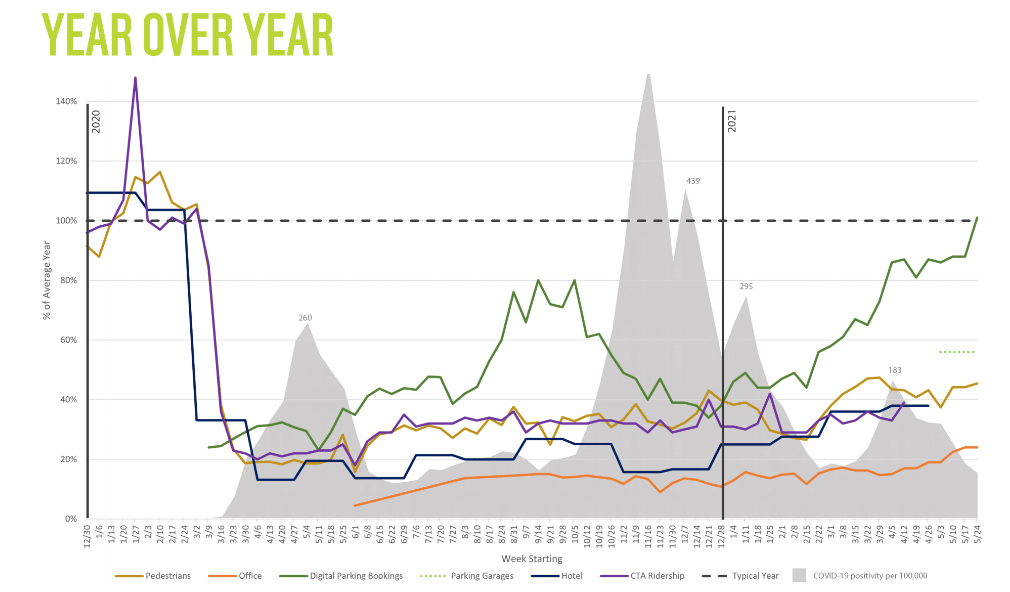Streetsblog has been following monthly recovery reports issued by the Chicago Loop Alliance, which aggregate data on parking, public transportation ridership, office space and hotel occupancy, and pedestrian counters, as well as responses from Loop Alliance member surveys to track physical and economic activity downtown throughout the pandemic. Disproportionately high levels of car parking in the Loop, as compared to other metrics, has been a source of alarm. Last month, when parking levels reached over 80 percent of the same time in 2019, while all other metrics remained below 50 percent of “normal” and major employers like BMO Harris and JPMorgan Chase announced they would collectively bring ten thousand workers to the Loop in June, I warned of a fast-impending carmageddon should workers not return to public transportation or active modes for their commutes.
The Loop Alliance May report sheds a sliver of light on why personal car use is so astronomically high while office buildings stand mostly empty. The car parking data is now available into two categories: Digital parking bookings, mostly used for one-off, infrequent or short visits to the Loop, and parking garages, which are used primarily by commuters. The parking garage rates in May—the first month this data was available—was at about 56 percent of 2019 levels. Not as high as the prior month’s report based exclusively on digital bookings, but still double the office occupancy rate. Office occupancy increased to about 25 percent in May, the highest it has been since March 2020.

The digital parking bookings are an even more unnerving story. Last month, this line continued to shoot skyward, exceeding pre-pandemic levels for the first time. CTA data lags a month behind other reports, but ridership in April didn’t exceed 40 percent of ridership in 2019. Pedestrian rates, too, remained mostly static from April to May, with a slight dip at the beginning of the month.
The line graph that stacks this data and shows trends from the start of the pandemic is jarring. Most of the lines remain fairly low on the graph, tracing a slow but fairly steady path toward the dotted line indicating “normal.” But digital parking is an outlier—a steep, jagged line breaking through the pre-pandemic benchmark exponentially faster than other recovery metrics.
With mask restrictions lifting, summer festivals returning, theaters reopening and white-collar businesses planning to bring employees back to the office in the coming months, encouraging commuters and visitors to the Loop to bike or take public transportation needs to be a top priority—not just for CTA and Metra, but employers, cultural institutions and city agencies as well.





